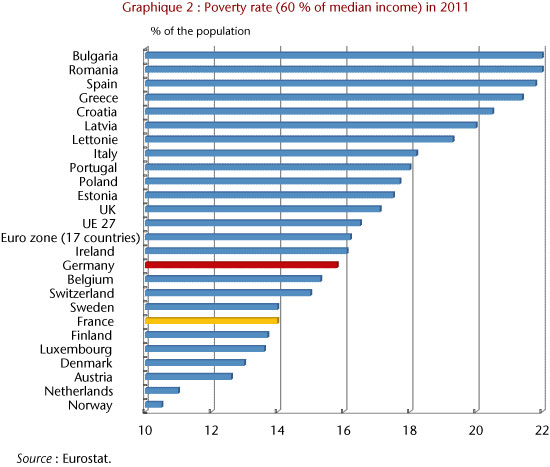“Poverty in Germany has not only reached a new record high, it has also threatened the country with disintegration into disparate regions.” Thus begins the annual poverty report of the German Federation of Welfare Associations.
Although the economy has grown slightly and unemployment is relatively low, the poverty rate in Germany has increased; it has been rising almost continuously since 2006 and now stands at 15.5 percent. This means that about 12.5 million adults exist on less than €845 per month as unmarried persons or less than €1,873 in a family with two children.
With the exceptions of the three federal states of Saxony, Saxony-Anhalt and Brandenburg, the population has fallen further into poverty throughout the country. Although Hesse, Bavaria and Baden-Württemberg have below-average poverty rates, they were not exempt from this trend.
The Ruhr region, Berlin and the state of Mecklenburg-Vorpommern, referred to in the last three reports as problem areas, again exhibited significant increases in poverty. In Berlin, the national capital, one person in five is now regarded as poor.
Sharply contrasting rates of poverty are increasingly differentiating and separating the various regions of Germany. While relative wealth inequality between the richest and poorest regions stood at 17.8 percentage points in 2006, it reached 24.8 percent in 2013. This indicates the great disparity in wealth existing between the populations in the Lake Constance-Upper Swabia region on the southern border of Germany and the port city of Bremerhaven, where almost one person in three is classified as poor. Both the degree of variation between these two regions and the rate of poverty in Bremerhaven marked all-time highs.

